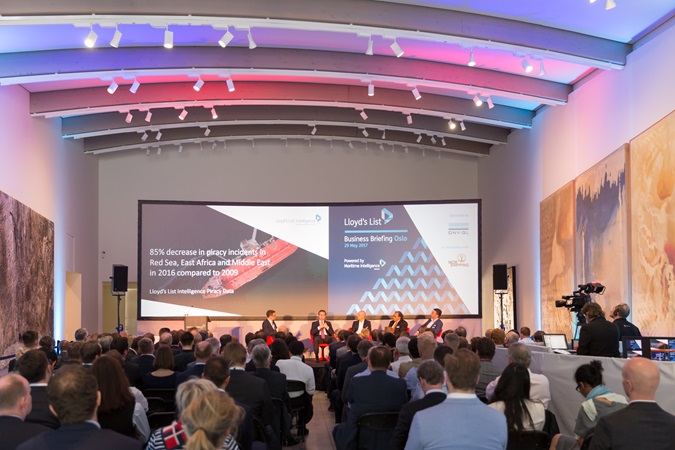Digital Disruption - Managing the Transition to Smart Shipping
Key Themes and Discussion Points
- Immediate and near-term impact of digital disruption
- Who and what is driving the digital agenda?
- Generational and cultural changes in making the digital conversion
- Winners and losers
Digitalisation will continue to drive far-reaching change in shipping, but businesses should not be overawed by the transition, according to industry leaders brought together by Lloyd’s List.
The boardroom and technology leaders told some 200 attendees at a Lloyd’s List Business Briefing in Oslo, during Nor-Shipping 2017, that digitalisation will certainly bring about change and drive the industry in a new direction, but it will take much longer than many in the industry expect.
The panellists were charged with cutting through digitalisation hype to provide much-needed clarity on the theme, Lloyd’s List Managing Editor Richard Meade said: “Digitalisation of the maritime supply chain is already stimulating new ways of doing business, forcing participants to take a rethink and re-evaluate the business value they generate. This is a very real disruptive risk. As one of our esteemed panellists today put it, obsolescence looms for some who are not agile enough to make the shift, but for others opportunities for new services and business models will emerge.”
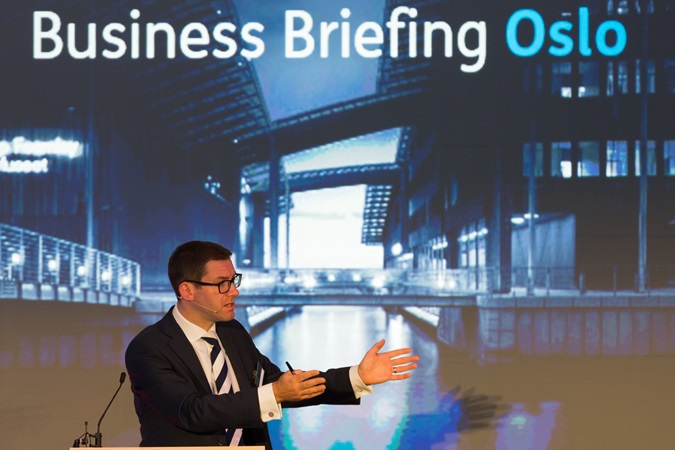
Digitalisation of the maritime supply chain is already stimulating new ways of doing business, forcing participants to take a rethink and re-evaluate the business value they generate
Richard Meade, Managing Editor Lloyd’s List
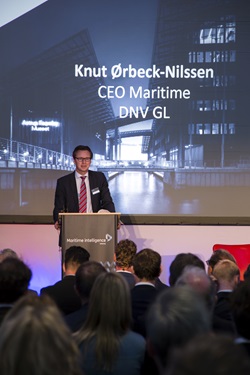
Opening the briefing, Knut Ørbeck-Nilssen, CEO-Maritime, DNV GL – a pioneer in digitalisation innovation – said: “We talk about modernise or sink, we talk about digitise or die, or we even things like big data is, for us, like sex is for teenagers. Are you thinking ‘so, everyone talks about it, nobody really knows how to do it.’ Everyone thinks everyone else is doing it. This is also one of the articles recently published in Lloyd’s List, it's a good way to describe digitalisation in shipping.
“The market is naturally taking its toll. Many are in survival mode. At the same time the digital transformation is upon us, the question is who is ready to ride the wave of big data, interconnectivity, cloud based computing? Who is ready to disrupt and who will be disrupted? So, these are some of the mindboggling questions that we ask ourselves.”
Everyone is looking for a competitive advantage and many see that moving ahead, inside the field of digitalisation, might give them a competitive advantage
Knut Ørbeck-Nilssen, CEO-Maritime, DNV GL
Immediate and near term impact of digital disruption
“If I look at one of the really high potential developments, it's what we are doing now with machine learning to really put smart algorithms in place to help speed up the responses that we are providing to our customers on technical questions,” Ørbeck-Nilssen said
“We just hired a digital trainee, so this is a machine learning algorithm, she's been with us now for about three months and she has the accumulated knowledge of about 200,000 questions and answers on technical subjects. The speed she learns is truly amazing and we are using her now to direct these questions from our customers to the right expert in the organisation.
“The next step is that she will also come up with the proposed answer, and then the technical expert can validate that response, and I foresee that we will really speed up the response time incredibly by doing that. So, it's pretty amazing in three months she has the accumulated knowledge of 200,000 questions and answers,” Ørbeck-Nilssen said.
Ari Marjamaa, Chief Transformation Officer, WWL ASA, Wallenius Wilhelmsen Logistics, said: “It’s very easy to see where we want to go, kind of the other side of the river, and then it's very easy to see all the practical challenges we have here, but it's kind of hard at this time and age to see the bridge from here to there.
“There is a lot of dust in the air at the moment, there's a lot of hype. I think we're likely at peak digitalisation in the sense that it can't get much more; the balloon is pretty expanded at this point in time. That being said, I think – and your example, Knut is great – there is massive potential, but we certainly have to navigate our way and find the next stone to cross this river.
“I am a little bit worried about companies fearing that everyone else is doing a lot and going off and making big investments and thinks that might be a little bit rash, particularly when it comes to blockchain and other technologies that I think are important from a supply chain basis, meaning that we actually need to interact with each other.
I think it's important that we collaborate, that we actually talk together and that we don’t compete on having the best and the biggest and the shiniest. That won't take us to where we want to go,” Marjamaa said.
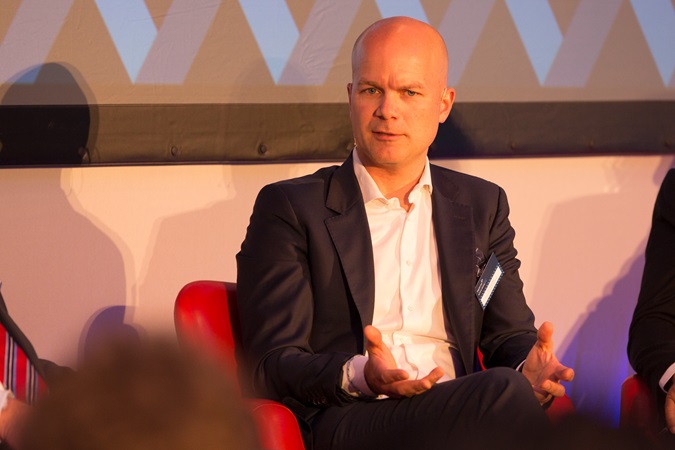
It's important that we collaborate, that we actually talk together and that we don’t compete on having the best and the biggest and the shiniest. That won't take us to where we want to go
Ari Marjamaa Chief Transformation Officer, WWL ASA, Wallenius Wilhelmsen Logistics
Andrea Zito, Group Director, Technical V.Group, said: “I think digitalisation is impacting us the same as automation impacted us. The important thing is not data, it is the Connected Ship because we have the data on board. We all think when we talk about digitalisation, we talk about the cruise vessels, the offshore where the pipelines are huge in communication, we have (some) 60,000 bulk carriers, tankers where you have 20 people on board and very little connection.
“Two years ago we made a survey, out of the 1,000 ships we manage only 40% were connected decently to get decent use of data. Now it's increasing, the communication price is going down and this is the important thing, and together with this I think – like automation – that common sense has to prevail. We will still have human beings on board because I – and I try to be a little bit provocative here – I don’t see the autonomous vessel being replicable for the 60,000 seagoing vessels around the world, so we will still have the human element on board.
“The important thing that a lot of people do not take, is we need to translate this data with algorithm for decision support system for the people onboard and ashore, because without this automatic algorithm that are translating the data in decision support systems for the people who manage the vessel, we will fail,” Zito said.
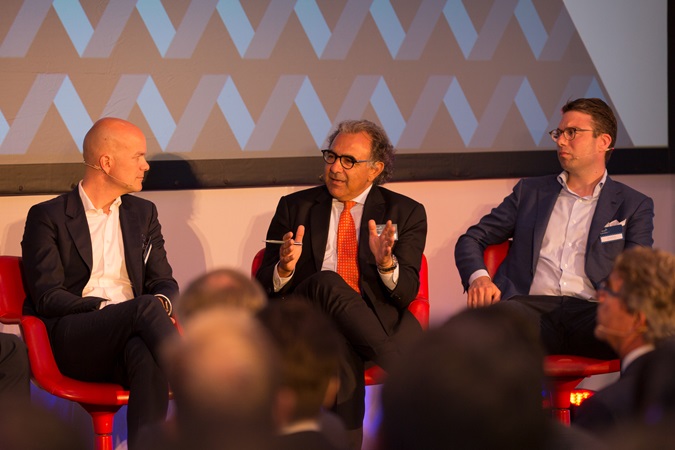
Andrea Zito (centre) CREDIT Informa - Steffen Rikenberg
I don’t see the autonomous vessel being replicable for the 60,000 seagoing vessels around the world, so we will still have the human element on board
Andrea Zito, Group Director, Technical V.Group
Prominent Danish banker, Christopher Rex, Director of Research, Danish Ship Finance, said digitalisation must be seen against the bigger backdrop of the 4th Industrial Revolution.
“The 4.0 is not necessarily only about autonomous or digitalisation or whatever we would like to call it, to my understanding we have a more fundamental change going on here. On the one hand, we have an aging consumer base in the OECD that basically means that all global consumers are about to retire. This is not to say they will not continue to spend, but our spending behaviour will change towards services that are not seaborne driven.
“So that basically means that we are about to see global trade volume stagnating. And now we come back to the combinatorial effects of the 4th Industrial Revolution, because why I think that the 4.0 is more than just about autonomous, this is about we may not necessarily need the same amount of fossil fuels in the future, so instead of having unarmed drilling rigs, this is much more about looking into the effects we have seen with renewable energies.
“Today we can see that both solar and wind energy are competitive on a non-subsidy basis in most of the sunny parts of the global economy, in particular in southeast Asia. This is a place that matters the most because this is the place where everybody is investing in new ships, hoping that the future demands will come from due to population growth, so when these regions (to which) we are basically about to provide electricity at a grid parity level with fossil fuels – but on a smaller investment level with a quicker repayment period – this is a very significant change in energy outlook, both for the energy sector of course, but in particular also for the shipping sector.
“So, basically what we're saying is that in most of all ship segments we should not expect to see major increases in demand for the next 15 years plus, something like that, so this goes basically much more beyond all the things we are seeing in digitalisation in our business model.
“This basically means that as a banker at least…. we have to pick the right winners of tomorrow because there will be a lot of struggles in the next few years, it might not even turn in 12 months, 18 months, whatever. But of course shipping will still need ships and we will still need fossil fuels, but the growth in these commodities is much less than what have seen in the past, so we need to adapt to a new situation,” Rex said.
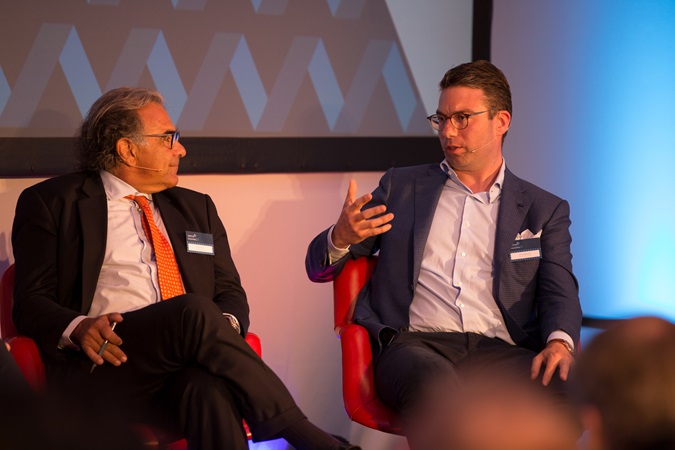
As a banker we have to pick the right winners of tomorrow because there will be a lot of struggles in the next few years, it might not even turn in 12 months, 18 months
Christopher Rex, Director of Research, Danish Ship Finance
“I think we already are there, we are talking about digitalisation every day and the industry have done it for many years,” said John Taxgaard, VP Global Maritime Services, Ericsson. “When we move into customer engagement, they are already well aware what they really want to do with the technologies that they have available right now.
“What is the problem is…. what about the future? What about building some kind of a bridge from where we are today to be where we really want, but nobody really knows the technology in 12, 18, 24 months.
“When we discuss digitalisation technology with our customers, it is more about really understanding to build a trust relationship and do it an actual way of working and an actual partnership where you develop, based on the technology that is available on the market.
“The engagement that we are doing as well is together with partners, we can’t do this alone. We are from a different industry, we are coming from IT Telco. What we are doing is that we have a lot of experience from other industries. We try to take all these great experiences and knowledge from other industries, bring it in to the maritime, not only shipping. I think we have too much focus on only shipping, it’s about maritime. It’s about the whole logistics chain to be connected together.
“So, it’s really about how you, in the maritime industry, try to find the right partners to secure that you are connected and that you do the journey together. I believe that, Ericsson believe and also together with our partners, this is a journey based on HR management because the technology...what you wanted to buy yesterday is already outdated tomorrow so that’s why we need to be in a position to make a big change management. I think that is one of the biggest challenges in the maritime, also in the oil industries, change management.
“Also, how do you change the behaviour of humans because it’s you and me that needs to work with the new and latest technologies. So, it’s not about making the internet smarter or the shipping smarter, I think it’s more, how can I make the human smarter to use the technologies,” Taxgaard said.,
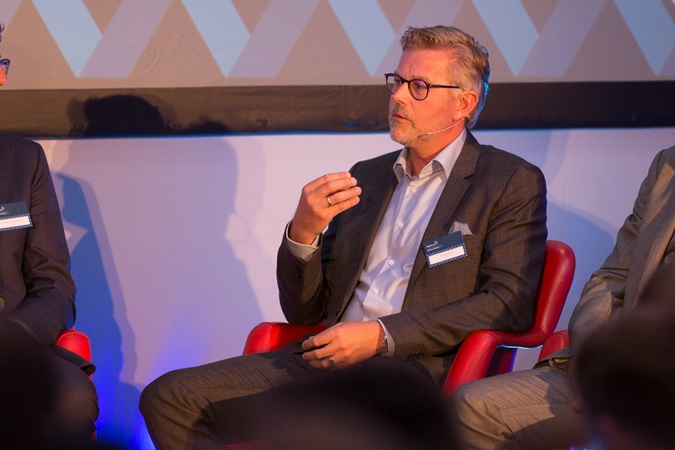
It’s not about making the internet smarter or the shipping smarter. It’s more how can I make the human smarter to use the technologies
John Taxgaard, VP Global Maritime Services, Ericsson
Who and what is driving the digital agenda?
We are not an industry that necessarily relishes in being a first mover, largely because there is no first mover advantage in shipping.” said Richard Meade. “Why would you invest a huge amount of money in technology or changing what you do if your competitor is not going to do the same? What's the feedback from the customers? Are they willing to take a risk? Are they willing to be the first movers?” “Naturally this depends a lot on which segment you operate in because there are quite big differences,” said Knut Ørbeck-Nilssen. “I would say that from the conversations that I'm having with a lot of the top executives in shipping companies and yards and manufacturers is that they see a lot of potential in,, the broad term of digitalisation and my impression is that these days everyone is looking for a competitive advantage and many see that moving ahead,inside the field of digitalisation, might give them a competitive advantage in an otherwise very competitive environment. “There are those that are advancing this quite a lot and there are others that would like to hold back and wait and see, as many do also when it comes to regulatory compliance, but I think this is the nature of such a broad industry where you have so many different philosophies and so many different strategies, but what I really feel a lot of traction on is there is no discussion about connectivity increasing, and connectivity is the platform, the foundation for what we are talking about. “And the flipside of connectivity is naturally cyber security and these two issues are fundamental for progressing on that journey of digitalisation, and that I think everyone is well aware of and very much takes active steps towards,” Ørbeck-Nilssen said. Maersk recently made a big investment in blockchain technology, signing with IBM. Norbert Kouwenhoven, Head of Global Trade Digitization Deployment, IBM, said one of the reasons why IBM teamed up with Maersk was to have a big IT provider, IT technology and “a very big logistic player to create volume because we think, in terms of ’world domination’, we realise we will not be one platform, but there will be a few. Like you have the Apple, the Samsung, you know, there will be a few left, but we definitely want to be one of the three. “And so big volume. The players who use that platform will have the first user advantage because they will have significant cost reductions. “There is so much to gain that we think that if we have this platform fast up and running that we will attract a lot of users and we will have this volume and we are there to stay, so for us that’s the first user advantage,” Kouwenhoven said.
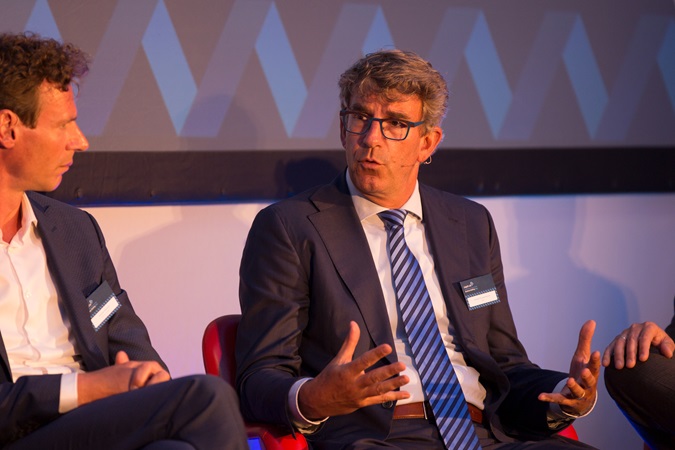
There is so much to gain that we think that if we have this platform fast up and running that we will attract a lot of users and we will have this volume and we are there to stay
Norbert Kouwenhoven, Head of Global Trade Digitization Deployment, IBM
Ari Marjamaa said blockchain is but one digitalisation development on which shipping should focus. “We're seeing fundamental change in the business model and a likely disruption to the concept of shipping. Take something like additive manufacturing that has the power to take out significant portions of what's being shipped.
“In our own industry as a RoRo carrier of course we see that the automotive industry is going through a pretty massive disruption which requires us to think quite far ahead to what might happen given that the vessels that we operate will be with us for 30 / 35 years, there’s quite a lot of change that could happen in this scope, and that changes the business model.
“A lot of the digitalisation talk, however, is on a very local level on the vessel, it's about the connectivity, getting the data out, but when you put that in your context it feels a little bit like rearranging the deckchairs on the Titanic, because it's a pretty significant change, which is why I'm using blockchain as an example of something that we as an industry need to focus on to improve our own position.
“I think the worry is not really that we will beat each other to death, it's rather that someone else comes in and steals our business model and all the technology, a fundamental demographic shift or something that completely screws up our game, we will in the meantime of course be competitive to each other and push profits down and make life miserable as shipping always does and we will need the cost reductions that this offers.
“But I think in terms to offer the platform that the industry could do and then jointly go forward, I see blockchain as one way of creating the tapestry of trust and bringing transaction costs down, sharing benefits between all of us in the industry, it's not really about competitive advantage but we have to work together to create the strongest foundation possible given that we will be hit in the face with some serious changes,” said Marjamaa.
Christopher Rex said: “We are basically about to see that manufacturing are relocating, not just to the next cheap labour economy, but also close to the consumers whether that is in North America, Europe or Japan, basically to say that we are rearranging the whole container industry, where in the future we will expect to see much more regional trades and much fewer intra-regional trades and this will significantly change energy demand, demand for electricity, diesel and all the links feeding into the supply chain of driving an economy, so this is quite significant what we are looking into.
“And in regions like, for example. western Europe, North America, Japan where we have aging consumers this is good news because then we can maintain GDP growth a little bit longer even though we have fewer hands, but there's awful news for all emerging markets where we have population growth and we basically need to create millions of jobs each month just to stabilise the unemployment weight. So, for example India, this is difficult news,” Rex said.
Responding, Knut Ørbeck-Nilssen said: “Can I just offer a quick comment on that? I think the bad news is really that we have to do everything at the same time, we can't not optimise the vessels, we can't not leverage all the data that's there, we can't not look at the fleet and try and do the best thing we can in terms of getting the most juice out of the lemon, we can't not look at the supply chain as an area of information sharing and transactions that digitalisation obviously influences.
“But likewise we also have to think as an industry way further down about what might come and that really is supported by that outlook, and we have a little bit of a tendency to stick the head in the ground and think that it will be the same as it's always been, and that's the question, is it really different this time? There are some indications saying that, well, maybe it actually is,” Ørbeck-Nilssen said.
Daryl Williamson, Lloyd’s List Intelligence Commercial Development Director, said digitalisation’s future is allied with the way in which businesses employ their data.
“You can put all of the data in one large database, it won’t tell you anything. You’ve got to look at the value that you’re trying to extract from it, some of the things that were said there. What is the value of your business? What are you actually bringing to the party there? How is that going to fit in the digital future? So, collect the data with a view to how you are going to be using it.
“Think about your technology suppliers; are you just buying technology and bolting it onto your business or are you regarding them as business enablers? I think we’ve all got to work together and as we talk around here, each of us has got some unique part of the jigsaw puzzle and the more we can actually share that, our industry can make use of it,” Williamson said.

You can put all of the data in one large database, it won’t tell you anything. You’ve got to look at the value that you’re trying to extract from it
Daryl Williamson, Lloyd’s List Intelligence Commercial Development Director
Thorsten Meincke, SVP Global Seafreight, Kuehne + Nagel, said: “What I see changing now is technology…. but it’s not happening enough; there’s sometimes a big step you are making. When a big step is happening, it needs somehow a wake up and this wake up in the past was always done mainly by a consultant and by media.
“What is changing now is, instead of consultants and media picking up, what I see is that B2B.com companies are hyping here and they are hyping much more and this is probably what is concerning us.
“We see in most companies and people working, not coming from the industry, but seeing it’s a big market so let’s go in and make some big money in there, and then there are investors – even more far away from our industry – believing stories and hearing stories (who) within an hour then decide if they invest or not.
“We consider ourselves already very digital and when I see our interaction, for example, with carriers, it’s nowadays by 95% completely electronic.
“Then, coming to blockchain, that is, for me, the next level of EDI (electronic data interchange) and there is a lot of opportunities which we are focusing now on, to even upgrade again and again and again to make things better,” Meincke said.
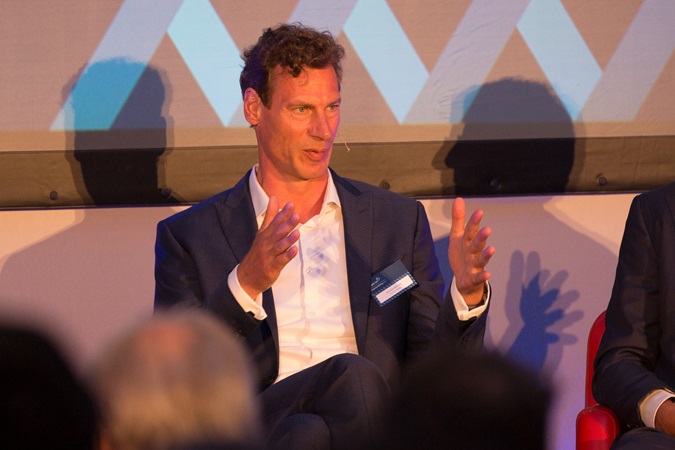
When I see our interaction, for example, with carriers, it’s nowadays by 95% completely electronic
Thorsten Meincke, SVP Global Seafreight, Kuehne + Nagel
Generational and cultural changes in making the digital conversion
The panellists said digitalisation development, for all its technological imperatives, cannot be achieved in isolation, without mindset and skillset.
Richard Meade said: “We are educating an industry; well I would argue we're probably not educating an industry ready for the technical revolution that we are effectively predicting between us. You've got to get some boots on the ground with people who actually know what they're doing.”
“Yes, but I take a slightly more optimistic approach on that,” said Knut Ørbeck-Nilssen, “because I think if you look at the young generation that is now, at universities or high school, it is fantastic to see how they digest the digital capabilities, and I was just thinking last year we introduced drones as a way of inspecting inside of cargo tanks, and drones was the most popular Christmas present in the US a couple of years ago, so these are natural digital natives and they will master a lot of the things.”
“Yes, but we will have exactly a big shift in competences and we need to think,” said Andrea Zito. “I mean this is managing about 60,000 seafarers per year and having to train them. This is a big change in competencies, in mindset, in framework and we need to give them clarity because it is a changing environment where we have, at the same time, a kind of perfect storm because we have (in) 2020 the sulphur (regulation), we have the ballast water and we have other things which are speeding up at a certain pace and we see that the industry is struggling to cope with all these things.
Ari Marjamaa added: “I was just thinking there is actually one big dilemma that shipping companies are faced with these days because we talk a little bit as if we're all going to be Silicon Valley programming outfits, and we might. We might go that way, but I think we still need to remember that it is a very physical industry.
“Our own company touches somewhere between 10 and 15 million cars every year, it's physical handling of units and it's geographic, it's nitty-gritty, it's challenging in all its practical aspects, where technology of course comes in and supports it.
“I think what we're looking at is ways of using partnerships and more flexible models both to speed up how fast we can get to the solutions as well as tapping into the best talent, because we can't be sure that we are that; we are clever, sure. but I'm not sure I am the cleverest programmer on the street, so we need to go and find them.
“Instead of trying for all of us to try and build up that competency in-house (which) is going to be quite expensive, maybe it's better to find more flexible modes, so we're certainly looking into ways of partnering up or using areas of competency in a little bit more flexible way than we've historically done, because it's surely going to be a shortage of heads given all the opportunities for development that we have,” Marjamaa said.
Per Westling, CEO, Stena RoRo, was asked what it takes to be a digital ship owner these days. “I think it really requires that you put things upside down,” he said. “Here’s to give you an example, we have employed, in our company now, five mathematicians that are doing the work in the machine learning that we have entered into, very, very strongly.
“It is just something that you have to do, you have to throw the old stuff away and try new things and obviously, you need to try and see if some of the things work, and some of the things don’t really work that well, of course.
“Similarly, we’ve brought in mentors for the management of the company so I have been mentoring myself for a number of people, being old in the business so to say. But now my mentor is 25 years old and I’m adept, so that’s a new situation and I can tell you, it’s very rewarding. So, that’s one way of doing it, I suppose,” Westling said.
Lloyd’s List Intelligence and Marlink collaborated in producing a survey of how ready Marlink’s customers were for digitalisation. Svend Lykke Larsen, Sales & Business Development Director for Marlink, said the results were, in some cases, surprising.
“The response was more positive than we actually anticipated. So, in fact, we asked 200 shipping companies, 13,000 ships, various sizes and geography segments, and we asked at three levels in the organisation.
“Basically, the fleet, the ICT and the senior management level and the response is very positive, that there is indeed very much focus, the organisations are more digital focused and ready than we anticipated and half of the companies expect and plan to invest more in digital services than actually this year and previous years.
“But another one came in to play as well and that is crew skills and staff skills and maybe staff attitudes, so we must also really take that into account to say how can we make this digital journey a positive one for everyone involved.
“I mean not everyone will be involved, but we still have to motivate people and we have to make people part of it. I think that’s another key take away, is to say how to make this happen with people because we are also a people industry and one other finding is in fact that many of us think ship-centric but in fact, it is very much a question of how to improve the overall logistics chain and how to improve the customer experience,” Larsen said.
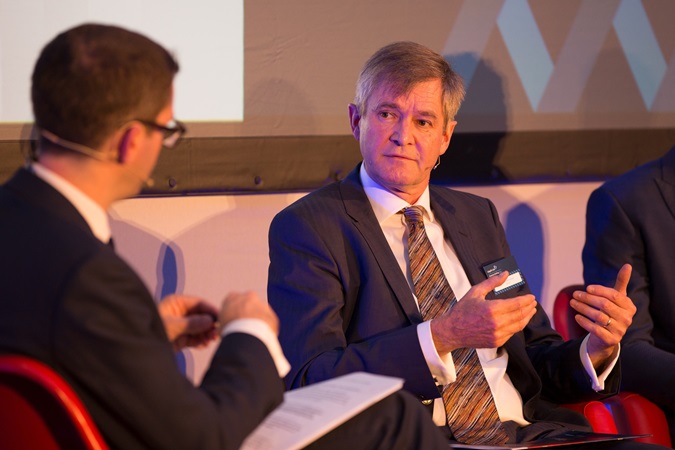
The organisations are more digital focused and ready than we anticipated and half of the companies expect and plan to invest more in digital services than actually this year and previous years
Svend Lykke Larsen, Sales & Business Development Director, Marlink
Winners and losers
Christopher Rex addressed what some in the industry are calling the Uberisation effect, saying one “risk that could emerge is another way of basically fixing the cargo where the buyers and the sellers are finding each other, whether that is an Uber model or it could be an Amazon of the sea or whatever you would like to call it, but basically this could be about if you start to build a trading platform that gives some players access to cargo and a significant part of the market that would no longer have access to the cargo.
“We can start to see freight rates and second-hand values recover for all the guys that have access to the cargo, or the guys that do not have access to the cargo are really in some quite difficult position.
“So, I think that value proposition of the industry needs to be a re-think and we need to understand that maybe buy low and sell high is not necessarily the strongest strategy, or clearly the opposite is not very wise either, to buy expensive and sell cheap, but I think we need to add an additional layer of value to the way the industry is creating values,” Rex said.
Ari Marjamaa said: “I think in general when you introduce technology that threatens jobs there will be reactions to it and most likely the major hindrance around companies is not really the technology or finding the right solution of this or that, it's really about getting the buy in and showing that the processes happen, because people will resist if they fear for their own future.”
Norbert Kouwenhoven said: “The whole point is about sharing data in the supply chain. You could say from foreign to shelf and you see so many inefficiencies because different players in a chain don’t know about the data that the other one has, so we figure if you enable the link between those parties, they can use it to each benefit this data and whether it’s the freight forwarder or the shipping line, whether it’s the authorities.
“If you start connecting the people and making the data available in the chain, you see all kind of new cases pop up. I give one example: Where customs gets a customs declaration saying this is a toy, they would say ‘ok, fine’. If they would have access to the full supply chain data, they might see from the source in, let’s say, China, that at least the factory has fireworks which is also toys but a different type of toys.
“So, that’s one example of having a limited view of one player of data in a supply chain where they will benefit by having this access to ‘further down the pipeline’ as we call it. It’s all about providing a greater pipeline and the user gets the benefits that come out of that,” Kouwenhoven said.
